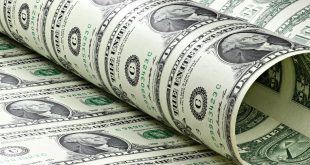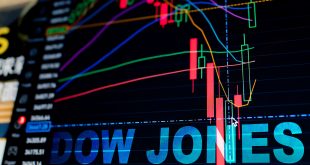The Fed hiked rates by 50 basis points. But Chair Jerome Powell’s comments briefly ignited a sharp rally across markets after saying that Fed wasn’t considering raising rates by 75 basis points in the near future. Assets rallied across the board on Wednesday after Powell’s comments; downplaying the likelihood of larger hikes and emphasizing possibility of a soft landing, taming inflation without inducing US recession. The market appreciated Powell’s clear message around the Fed’s approach to quantitative tightening. As for forex markets’ rection, the US dollar rose to 130.59 Japanese yen from 130.40 yen. The euro rose to $1.0546 from $1.0519.
The Bank of England’s Monetary Policy Committee approved a 25-basis point increase by a majority of 6-3, taking the base interest rate up to 1%. The UK central bank said the members in the minority preferred to increase interest rates by 0.5 percentage points to 1.25%. Sterling hit a low of 1.2393 against the dollar on Thursday afternoon London time, the lowest level since Jul. 1, 2020.
Equities
European stock markets traded firmly higher Thursday, with investors digesting mainly strong corporate earnings after the Fed tempered expectations for aggressive future interest rate increases. The DAX in Germany traded 1.8% higher, the CAC 40 in France rose 1.9%, and the U.K.’s FTSE 100 climbed 1.1%.
European equities were tracking global sentiment after Powell’s comments. This allayed some investors’ fears that the US central bank would raise rates by 75 basis points in upcoming meetings, potentially tipping the world’s largest economy into recession. Shell stock rose 3% after the oil major reported a record first quarter profit of $9.13 billion, even after writing down $3.9 billion as a result of its decision to exit its operations in Russia, boosted by higher oil and gas prices. The pan-European Stoxx 600 fell 1.6% by the close, with retail stocks shedding 2% as almost all sectors and major bourses finished in negative territory. Oil and gas stocks gained 0.7%.
US stocks lost further ground on Friday morning. Meanwhile the dollar continues to strengthen amid economic anxiety, with the dollar index notching a fresh 20-year high on Friday morning. US stocks rallied across the board Wednesday after Powell’s comments. All 11 S&P 500 sectors were positive on the day in the last hour of trading on Wednesday and the major averages were up sharply heading into the close, with the Dow up 900 points.
Energy stocks were the top-performers. Financial stocks were also leading such as Bank of America and Wells Fargo jumping roughly 4%. Technology stocks, which have been under pressure, also climbed. Communication services and information tech were among the top S&P 500 sectors. The moves came as the benchmark 10-year Treasury yield dipped. Apple rose more than 3%, and Meta Platforms gained roughly 5%.
On Friday, it was not surprising to see US equities experiencing further losses and ending the week close to fresh lows. On Friday also, major US indices have bounced from earlier intra-day lows hit after strong US jobs data, but are still lower. The latest NFP report was deemed as easing US growth weakness concerns and strengthening Fed tightening conviction.
The latest US jobs report showed that the US labour market remained in good health in April. The economy added over 400K jobs, a little more than the 391K expected and the unemployment rate remained unchanged at 3.6%, practically in line with pre-pandemic levels.
Oil
As households around the globe struggle with rising energy bills, some of the world’s leading oil giants reported record profits for the first three months of this year. The world’s major oil exporters met on 5 May, amid calls from across the globe to bring down prices. Ignoring calls from Western countries to increase production, the OPEC + group adhered to its plan to increase production target in June by 432,000 barrels per day.
Oil prices rose for the third consecutive session on Friday, shrugging off concerns about global economic growth as looming European Union sanctions on Russian oil raised the possibility of a supply shortage. Brent crude futures rose $2.08, or 1.88%, to $112.98 a barrel by 0922 GMT, while US West Texas Intermediate crude futures jumped $2, or 1.85%, to $110.26 a barrel.
The two crudes are on track to register a rise for the second week in a row, supported by the European Union’s proposal to phase out supplies of Russian crude oil within six months and refined products by the end of 2022. It also bans all shipping and insurance services for transporting Russian oil. Three European Union sources told Reuters on Friday that the bloc is adjusting its sanctions plan in an attempt to win the support of opposing countries.
This week, Saudi Arabia cut oil prices for buyers in Asia as coronavirus lockdowns in China weigh on demand, countering uncertainty around Russia’s supplies as the Ukraine war drags on. Aramco is lowering prices for the first time in four months. Aramco also dropped its key Arab Light crude grade for next month’s shipments to Asia to $4.40 a barrel above the benchmark it uses, from $9.35 in May. Profits for Exxon Mobil, Shell and more also rose by billions despite significant costs of exiting operations and/or investments in Russia amid war in Ukraine.
Gold and Commodities
Gold for June delivery rose $7.10 to $1,882.80 an ounce. Silver for July delivery fell 7 cents to $22.37 an ounce and July copper fell 2 cents to $4.27 a pound.
Gold prices retreated for third successive week but managed to pare some early week losses after the US Fed indicating a slightly less aggressive tightening of the monetary policy. On Multi Commodity Exchange, gold future rate for June contract ended lower on Friday whereas spot fold price ended around $1883 per ounce mark. According to commodity market experts, gold prices are under pressure as Dollar Index has sustained at its 20-year high levels.
Observers have said that demand for dollar may continue to remain on the positive side but global inflation hitting major global economies may continue to support gold price. They said that spot gold price has taken support at $1850 levels.
Cryptocurrencies
Bitcoin continued its slide all week long, falling losing nearly 9% on Thursday and Friday amid a broader selloff in financial markets. The cryptocurrency traded Friday at just under $36,000 and is down 18% over the last month. Other major digital currencies have also pulled back sharply. Here’s what experts say is weighing on cryptos.
The Fed’s rate decision and Wall Street responded with huge gains in the stock market on Wednesday. One day later, investors reversed course and sent markets into a nosedive — and took crypto prices down with it.
Cryptos have been tending to trend recently with the stock market. Bitcoin is mirroring the Nasdaq. Tech-centric index is down 21% this year, while bitcoin is down 22%. Many investors piled into bitcoin last year when it was priced between $32,000 and $36,000. A further drop to around $30,000 could trigger more selling. Bitcoin is really stuck in a sideways news cycle where you’re just waiting for it to be calm on Wall Street and then traders will see more people confident in investing.
Next Week
US Consumer Price Inflation data upcoming next Tuesday, it appears as though traders lacked the conviction, or at least there remains enough dip-buying demand, to keep the major US equity bourses above recent lows. Nonetheless, the S&P 500 still looks on course to post a fifth successive week in the red territory. The main focus for equity markets next week will be US CPI.

 Noor Trends News, Technical Analysis, Educational Tools and Recommendations
Noor Trends News, Technical Analysis, Educational Tools and Recommendations




